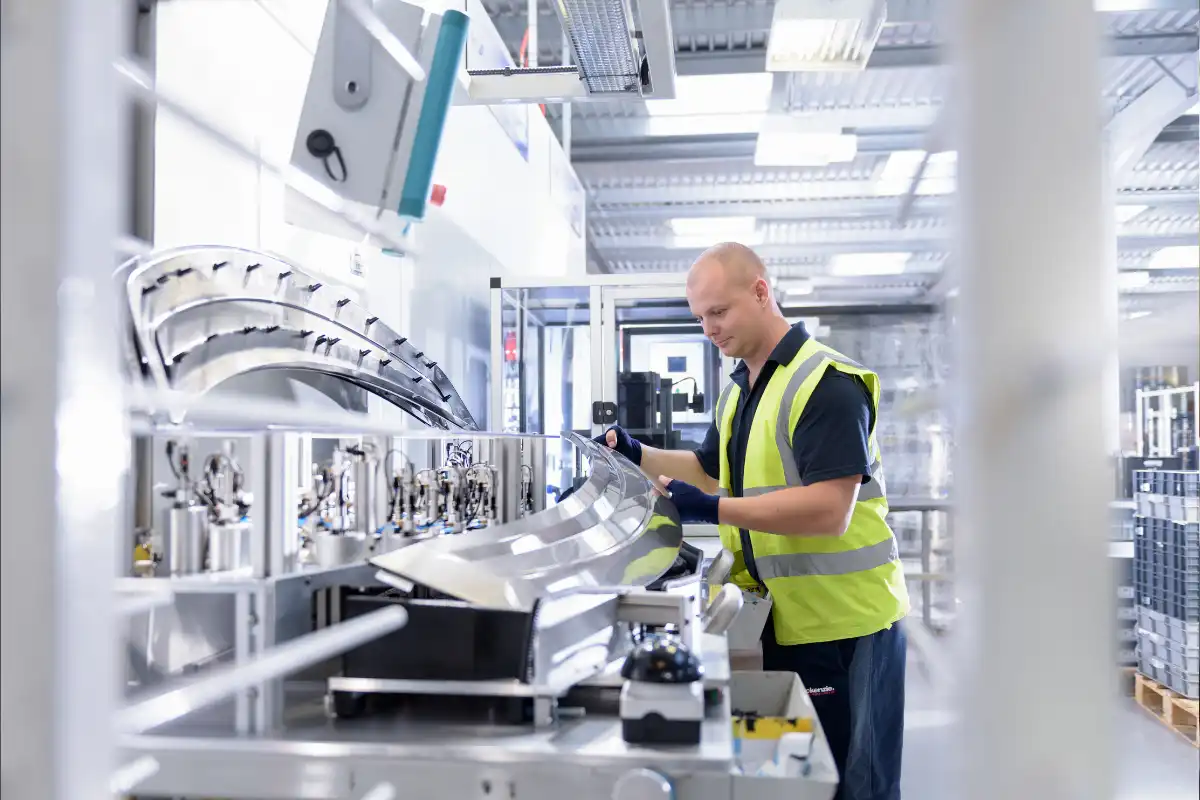
Key takeaways
- Facility management is now a strategic business function. Modern FMs align workplace strategies with organizational goals, focusing on technology integration, sustainability, and employee experience to drive efficiency and adaptability.
- Smart technologies are reshaping operations. IoT sensors, proactive maintenance platforms, cloud-based systems, and mobile-first tools help facilities run more efficiently, reduce downtime, and support data-driven decision-making.
- Best practices keep facilities competitive. Prioritizing preventive maintenance, securing data, automating processes, and implementing green technology ensures operational resilience, cost control, and compliance with environmental goals.
Facility management is no longer just about keeping buildings running; it’s about creating sustainable, efficient, and adaptive spaces that meet the demands of today’s workplaces. As trends like hybrid work models, sustainability goals, and advanced technologies redefine the field, facility managers must take a more strategic and innovative approach.
What is modern facility management?
Modern facility management goes beyond maintaining physical spaces. It encompasses operations, asset management, sustainability initiatives, and employee experiences. Facility managers are now central to aligning organizational goals with workplace strategies.
According to the International Facility Management Association, facility management is “a profession that encompasses multiple disciplines to ensure functionality, comfort, safety and efficiency of the built environment by integrating people, place, process and technology.”
In other words, it’s the strategic role that connects the workplace and the workforce.
Facility management contributes to the larger business, including its financial and operational priorities. Maintaining the ecosystem of all the different functions of a facility is a difficult task, so it’s important that FMs always build on experience, adopt helpful technologies, and acquire new skills.
Some of the core competencies of today’s FM include strong leadership and a knack for innovation. For example, FMs streamline the organization’s daily operations, launch workplace best practices, contribute to safety and security, and provide the proper workplace tools for employees to succeed. As with any management position, FMs also want to set an example for employees by demonstrating accountability, efficiency, and effectiveness.
Key elements of modern facility management include:
- Technology integration: Leveraging IoT, AI, and digital twins to enhance efficiency and decision-making.
- Sustainability initiatives: Implementing practices that align with environmental and ESG goals.
- Employee-centric approaches: Creating flexible and productive environments for hybrid teams.
Key trends shaping facility management in 2025
As businesses adapt to evolving workplace dynamics, facility management entered a transformative phase in 2024. From integrating smart technologies to prioritizing sustainability, key trends are reshaping how spaces are managed and optimized. These changes reflect a growing emphasis on flexibility, efficiency, and aligning facilities with broader organizational goals.
1. Enterprise asset management software
Enterprise asset management systems help FMs monitor and maintain physical workspaces. The platforms allow them to utilize the space in the most efficient way possible while also collecting useful facility data across the entire business. The data can be helpful in making decisions and finding ways to reduce costs. Often, the systems can be integrated with other apps or devices to create a customized solution.
2. Proactive maintenance software
Proactive maintenance management systems streamline maintenance tasks to ensure the operation can achieve maximum uptime and realize the most value from its assets and facilities. Rather than waiting for a maintenance issue and responding reactively, these solutions make it simpler to prevent maintenance issues in the first place. Stacks of spreadsheets are essentially replaced by a searchable database with a variety of functions that help maintenance teams become more efficient and more accountable.
3. Mobile-first technology
The mobile-first technology trend represents a major transition from on-site desktop software to cloud-hosted platforms, which allow FMs and their teams to access facility data anywhere, including from a mobile device. Such mobility is also excellent for increasing technician productivity and capturing data in real time, especially for worksites where assets are spread across a large area.
4. Internet of Things
IoT sensor technology provides a wireless connection from the assets to the maintenance management system. While there are several different types of sensors with different ranges and functions, some of the more popular ones allow FMs to track certain assets to discover their location, while others allow them to control a certain condition within an environment, such as heating or cooling on the shopfloor.
5. Attracting talent
Accounting for the needs of upcoming generations is an important aspect of being a successful facility manager. For example, younger workers are used to tech-enabled experiences in their everyday lives, and they expect that same convenience at the worksite. Keyless doors, apps that power work tasks, and Wi-Fi are all great places to start.
6. Keeping data secure
Cloud-based facility management systems are rising in popularity, especially within government agencies. Because the cloud offers more secure hosting of data compared with on-site server technology, cloud-based systems are the best choice for greater security, scalability, and recovery when disruptions occur.
7. Green technology
Utilization of green technology is also becoming increasingly popular as the threat of climate change grows. The World Green Building Council offer a number of resources for all types of built environments. Consider upgrades that will improve the energy efficiency of your facility, reduce pollution, or minimize waste.
Important facility management metrics
There are several metrics that you can use to determine the effectiveness of your facility management strategy. Analysis of — and acting on — these metrics can mean the difference between meeting your business goals or experiencing setbacks because of unexpected equipment failures.
Planned maintenance percentage
Planned maintenance percentage (PPC) represents the percentage of time that is spent on planned maintenance versus the amount of time that is spent on reactive/corrective maintenance. Clearly, it’s better to prevent maintenance problems proactively than to react to problems after the fact. To perform this calculation, divide the planned-maintenance time by the total maintenance hours, then multiply the resulting quotient by 100. Ideally, FMs should aim for a PPC of 90%.
Overall equipment effectiveness
Overall equipment effectiveness (OEE) is a gold standard for measuring the productivity of the equipment and other assets. This metric is also a great benchmark for identifying ways to improve processes. Calculate this metric by multiplying the quality (percentage of good products produced), by performance (percentage of time the asset is operating at maximum speed), by availability (uptime percentage). The ideal system would produce zero defects at maximum productivity without delays and achieve 100% OEE.
Preventive maintenance compliance
Preventive maintenance compliance (PMC) is the percentage of preventive maintenance tasks that are scheduled and completed within the designated time. It’s important to separate preventive tasks from reactive work orders to ensure an accurate PMC. You can calculate this by dividing the number of completed preventive maintenance orders by the number of scheduled orders, then multiply the quotient by 100.
Mean time to repair
The mean time to repair (MTTR) is the measure of how maintainable a repairable item is. MTTR accounts for the average time it takes to repair an asset, including the testing period to ensure successful repairs.
However, it generally doesn’t include the time necessary to obtain parts or materials. Start with the total amount of maintenance time related to failures and divide it by the total number of corrective maintenance actions taken to fix those failures during a given period. The goal is to reduce the amount of time it takes to repair each item so you can avoid the financial losses associated with downtime.
Mean time between failure
The mean time between failure (MTBF) measures the predicted time between inherent equipment breakdowns during normal operation. It’s a measure of reliability that indicates the amount of time a piece of equipment will predictably operate before a breakdown. Calculate this by dividing the total operational time by the total number of failures.
Facility management best practices
There are certain facility management best practices that you can apply to your business operation that are relevant to all industries. Adopting these best practices will help your business run smoothly, realize increased return on your facility investments, and enhance profitability.
Prioritize preventive maintenance
It’s always better to allocate time strategically to prevent asset issues, rather than resorting to sudden downtime to fix an unexpected problem that derails productivity. Uptime is the ultimate goal. While it may be tempting to defer preventive maintenance because of time or immediate cost issues, deferred maintenance can create a higher risk of asset failure, and therefore a greater burden on time and budgets in the long run.
Use IoT sensors
There are a wide variety of IoT sensors that you can integrate into your operations to automate processes and communication.
Here are some of the most common types of IoT sensors:
- Motion detection sensors are an excellent way to improve your security measures and discover where and when motion is occurring within the facility. For example, if a certain storage space requires special security clearance for entry, a sensor could detect when an individual enters the space when they shouldn’t have and produce an alert in the management system. This technology has become so advanced that it can detect specific movements, such as a person waving their right hand. The hand-waving action, for example, can be adopted as a process to request assistance remotely. Perhaps the safety engineer wants to request entry into the secure storage space. He simply waves his hand in front of the sensor, and the appropriate person is notified to grant entry.
- Temperature sensors measure the amount of heat within a certain area. This can inform you of when the temperature within your facility changes. This is especially useful for manufacturing facilities that use materials that are temperature sensitive. Knowing when the temperature is too low or too high can also be valuable for preventing unexpected damage to equipment and for making employees more comfortable in the workspace.
- Gas sensors monitor changes in the quality of the air and detect the presence of various gases. This is primarily used as a health and safety precaution to detect toxic or combustible gas that could be a danger to your employees.
Automate manual facility management processes
As technology continues to evolve, it’s important to stay up to date on the best ways to automate manual facility management processes. Automating will allow you to reduce repetitive manual processes and shave down the total cost of labor. Always make sure you’re implementing automation where it makes the most sense.
For example, if a preventive maintenance task occurs every three months, it can be universally scheduled using preventive maintenance software that will generate work orders for you when the time comes. That’s much more efficient than relying on the same work orders every three months (and possibly forgetting about some of them).
Gearing up for the future
Facility management is evolving rapidly, driven by technological advancements, sustainability goals, and changing workplace needs. To stay ahead, facility managers must embrace innovation, invest in proactive solutions, and prioritize employee and environmental well-being. By adopting best practices, leveraging smart tools, and focusing on long-term strategic goals, businesses can future-proof their facilities and create resilient, efficient spaces that align with their vision for growth.
Ready to transform your facility management strategy? Get in touch with Eptura.
Frequently asked questions
Key technologies include IoT sensors for real-time monitoring, enterprise asset management software, proactive maintenance platforms, and cloud-based systems for secure, mobile access to facility data.
Preventive maintenance reduces downtime, extends asset life, and prevents costly emergency repairs by identifying and resolving issues before they escalate.
By adopting green technologies such as energy-efficient systems, waste reduction programs, and environmentally friendly upgrades, FMs can reduce operational impact while meeting ESG and climate-related goals.








